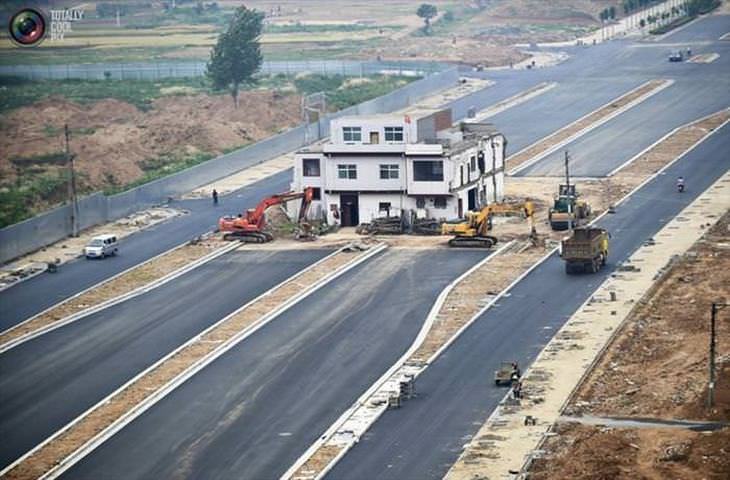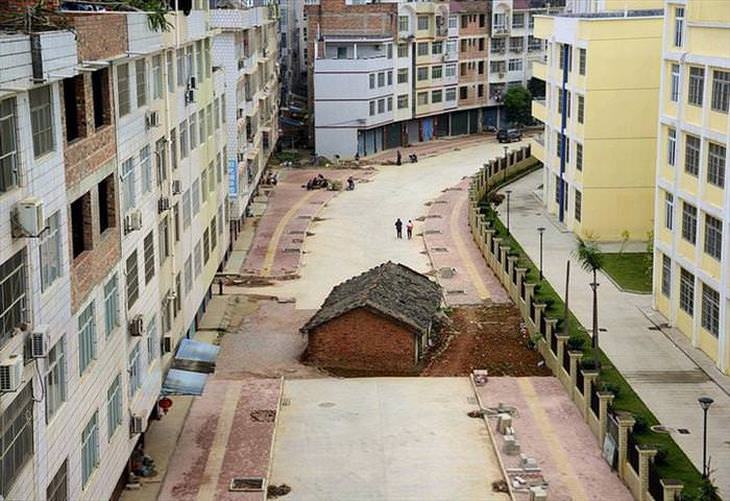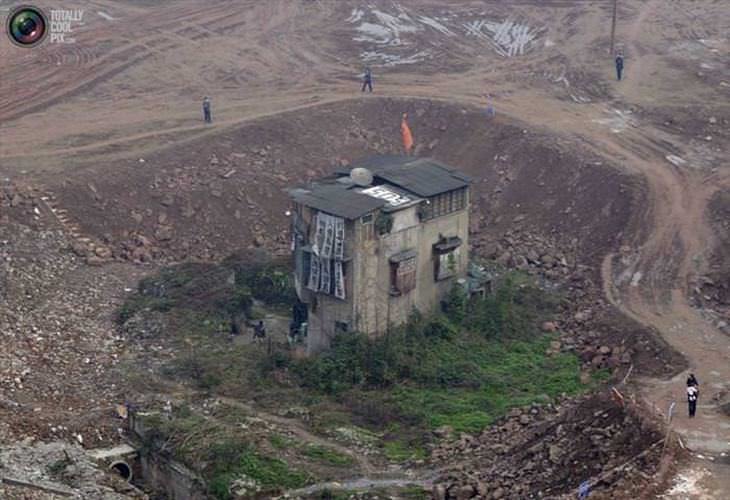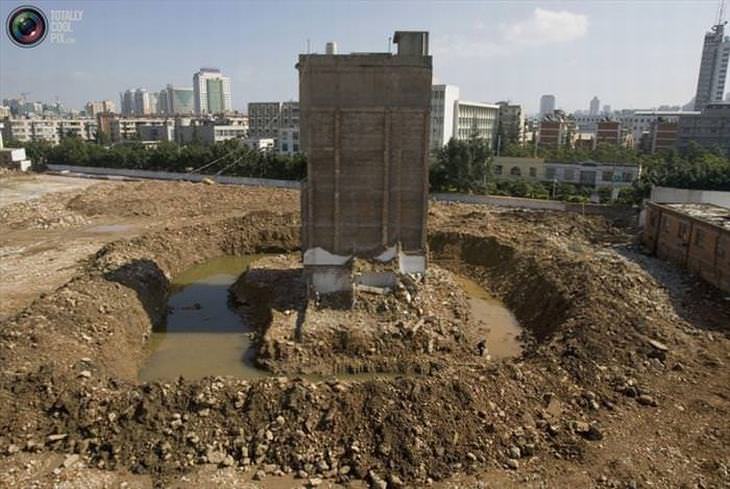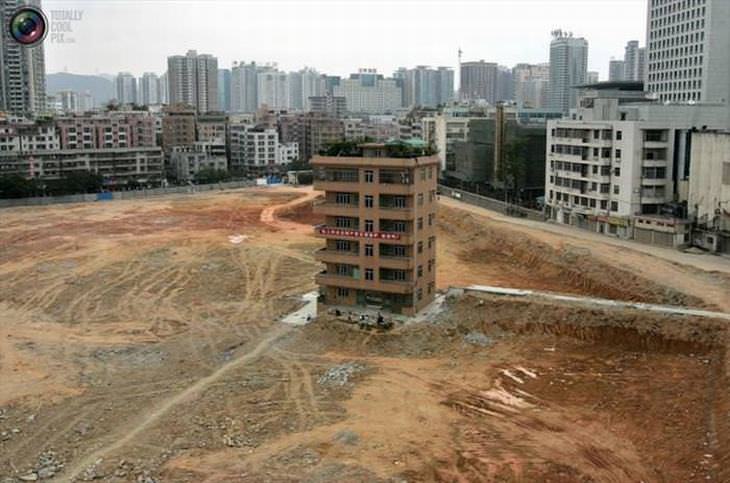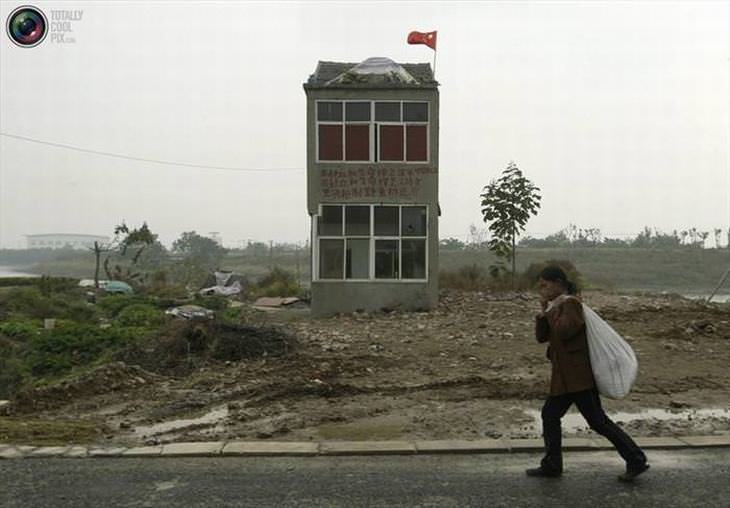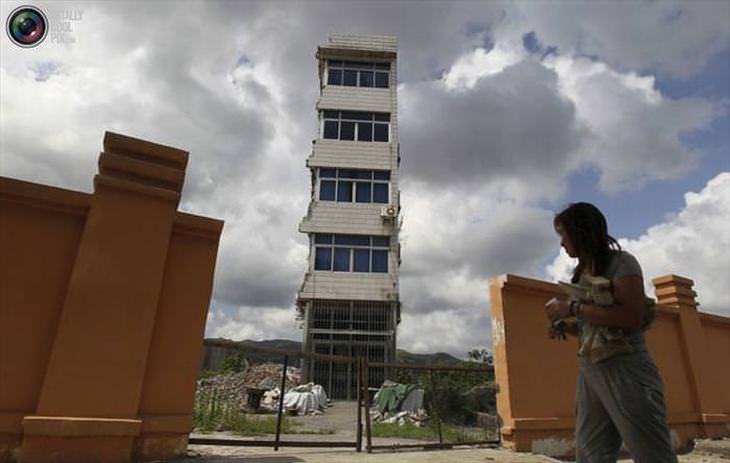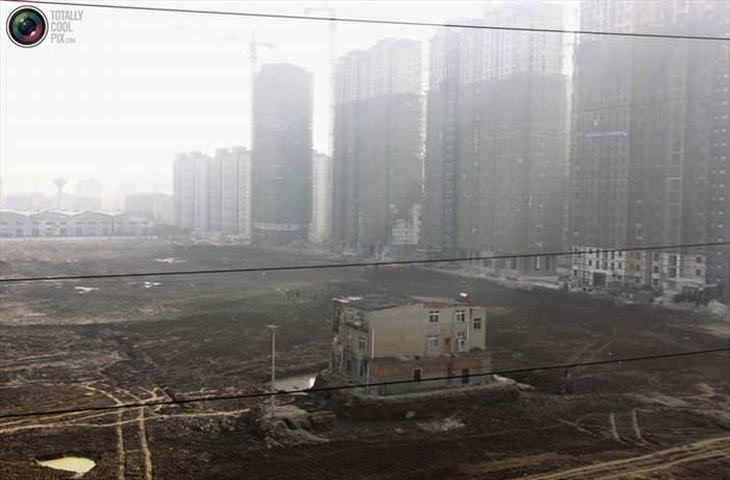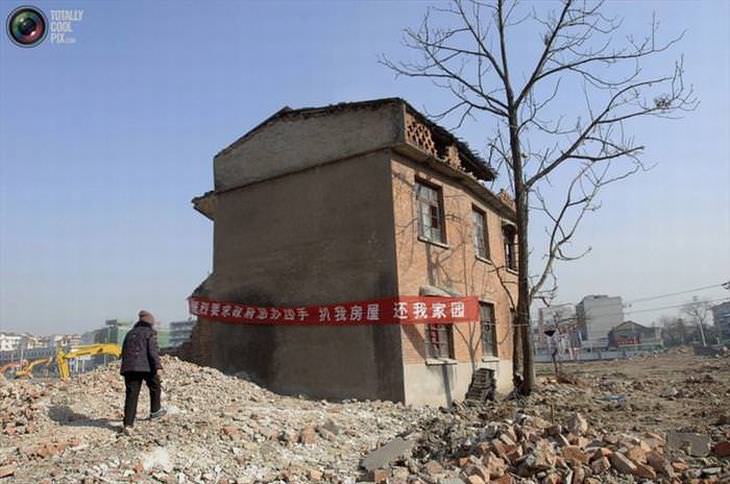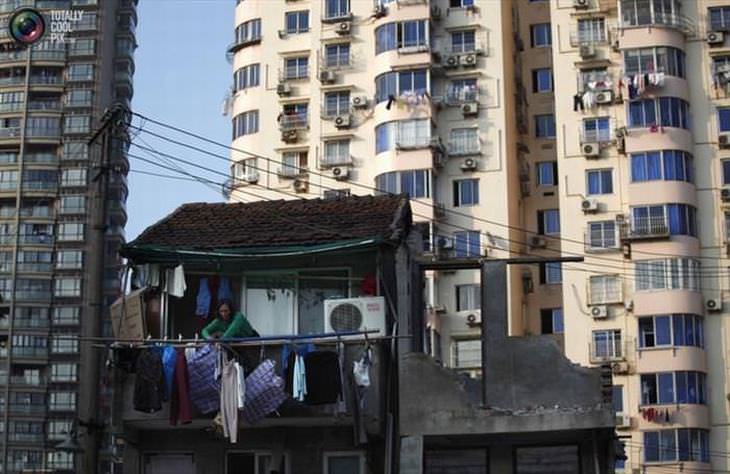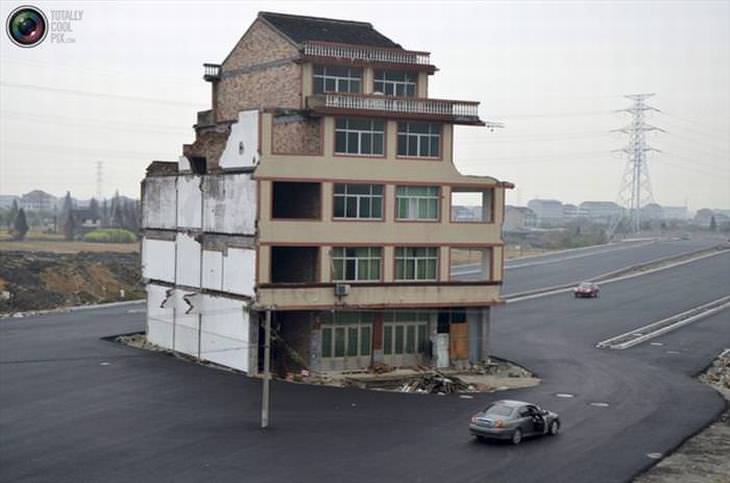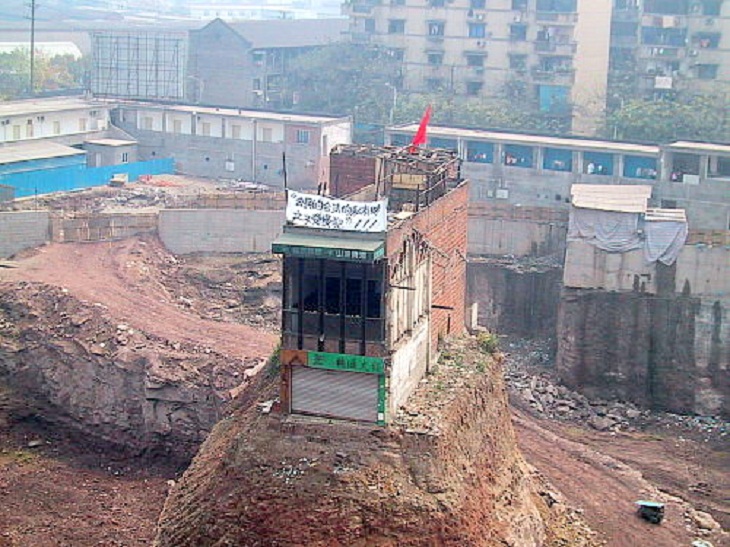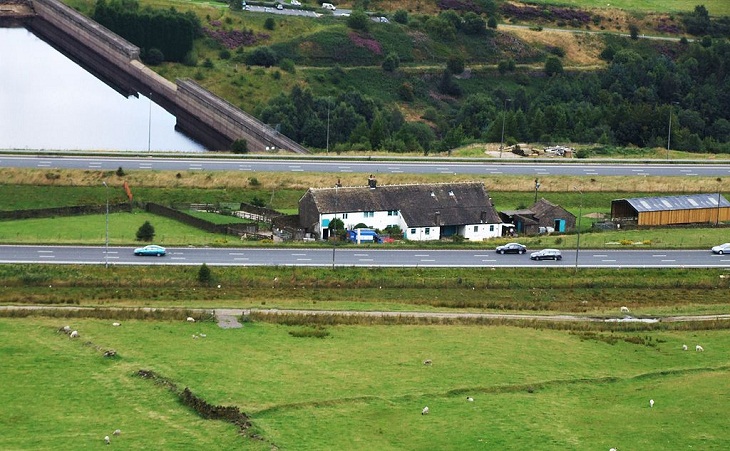The concept of a “spite house” is an old one – a person or a company wishes to purchase land for development, but some of the defiant landowners refuse to sell for various reasons. The buyer then proceeds to develop the land around the problematic property, often with bizarre-looking results.
In China, spite homes are very common, especially as the country is engaged in a process of rapid development. Landowners say that the compensation they're offered is too low, and hence moving out isn't an option. Many such owners have remained in their homes for years while new construction continues all around them.
These buildings are also known as "dingzihu” in Chinese (translated as “nail house”) because they stick out like a stubborn nail that can't be hammered down. They're seen as symbols of resistance against powerful authorities. While these buildings are most commonly seen in China, a few nail houses have been found in a few other countries as well.
Here are some humorous, odd, and downright wacky examples of nail houses.
1.
A lone 3-story home blocks the highway in Liaoning province.
2.
Sitting in the middle of a road in the Guangxi province, taken in April 2015. Reports claim that the owner did not reach an agreement for compensation with the local authorities.
3.
Living in a crater, in the Chongqing province, 2008. Yet another compensation dispute.
4.
The owner of this building in Yunnan province refuses to sell the property, even after the contractor cut off his water and power supply and even built a moat around the building.
5.
When all the tenants in this building refused to sell their homes, they found themselves in the center of a massive highway ramp.
6.
Hunan Province, 2007 – A lone nail home is standing in the middle of a shopping area. The fact that the owners refused to move didn’t stop the contractors from building around their house.
7.
Taken in April 2007, this 6-floor building stands alone in the middle of a huge construction site in Xinjiang Province. The owner of the building and his wife refused the compensation offered to them by the contractor, who planned on building a business center there. The couple demanded properties of an equal size, or that the contractor triples the compensation he offered them.
8.
Guangzhou, 2008 – Another family refusing to sell their home, stating that the offered compensation is too low.
9.
The owner of a “nail home” finally reached an agreement with the contractor. In this January 2008 photo, you can see the house collapsing moments after the agreement was signed.
10.
Another Zhejiang province nail home, standing tall but alone in the middle of an area that is meant to become a business center.
11.
This family in the province of Hubei refuses to vacate their home. Taken in 2013.
12.
The sign hanging on the house says: “I demand that the government will punish the contractor who destroyed my home. Give me back my house”. This house stands in the middle of an area meant for residential development and was taken in 2008, in the Anhui province.
13.
As construction dictated an excavation of the land, this nail homeowner refused to sell, which stranded his home on a new “hill”.
14.
A woman is hanging her laundry in a condemned house, in an area where large residential towers are planned.
15.
This 5 story building stands in the middle of a highway in the Zhejiang province, as of November 2012. The owners of the building, an elderly couple, refused to allow its demolition, stating that the compensation offered is not enough to build a similar-sized property somewhere else.
16.
A nail house in Zhengzhou. Taken in 2021.
17.
Developers built a 30-foot (9m) pit around this nail house in China, cutting off power and water. Seeing no other way out, the owners finally relented and sold the property. Taken in 2016.
18.
Nail houses aren’t just found in China. This is the UK’s Stott Hall Farm in the middle of the M62 motorway. Built in the 18th century, the farm was originally a shooting lodge. When construction of the M62 motorway began in the 1960s, it was thought that the farmhouse would be knocked down. However, it was saved due to a quirk in the geology of the land. Reports say that the land on which Stott Hall Farm was built contains a “geological anomaly”, making it “impossibly steep” for six lanes to be built on it. The farm is currently managed by Paul Thorp who lives there with his family. Looks like this nail house isn’t going anywhere.
Share this post with friends and family...

